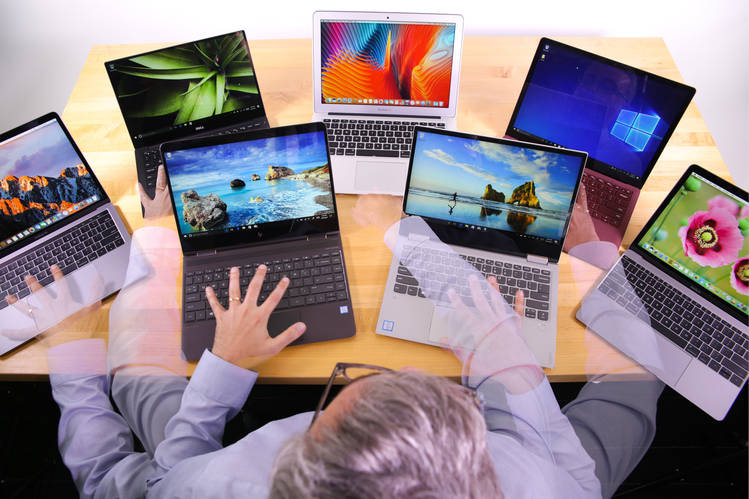Buying a Second Hand Laptop is an affordable way to get a high-quality device without breaking the bank. However, over time, you may find that your refurbished or used laptop could use some performance boosts to keep up with your work demands. Fortunately, upgrading a second-hand laptop is a cost-effective way to enhance its speed, storage, and battery life, making it suitable for long-term use.
In this blog, we’ll explore how to upgrade your second-hand laptop for better performance and extended longevity, ensuring you get the most out of your device.
1. Upgrade Your RAM for Better Multitasking
One of the easiest and most impactful upgrades you can make to a second-hand laptop is increasing the RAM (Random Access Memory). If your laptop has 4GB of RAM, upgrading to 8GB or 16GB will drastically improve its ability to handle multiple applications at once. This is especially beneficial for remote workers, students, or anyone using resource-intensive applications like browsers with many tabs, word processors, spreadsheets, or even light video editing.
How to Upgrade RAM:
- Check your laptop’s RAM capacity and find out the maximum supported RAM for your device.
- Buy compatible RAM sticks (preferably from the same brand for consistency).
- Open the back panel and install the new RAM into the available slots.
- Ensure that the RAM is seated properly and then power on your laptop to check if it is recognized by the system.
This simple upgrade allows your laptop to perform faster and more efficiently, ensuring smoother multitasking.
2. Switch to an SSD for Faster Performance
If your second-hand laptop is still running on a Hard Disk Drive (HDD), upgrading to a Solid-State Drive (SSD) will give it a massive speed boost. SSDs are faster, more reliable, and use less power compared to HDDs, leading to quicker boot times, faster file transfers, and better overall system performance.
Benefits of SSDs:
- Faster boot and load times: Your laptop will start up in seconds, and applications will open much faster.
- Improved durability: SSDs have no moving parts, making them less prone to failure compared to HDDs.
- Better battery life: SSDs consume less power, extending battery life during extended use.
How to Upgrade to an SSD:
- Check your laptop’s storage compatibility (make sure it supports SSD upgrades).
- Purchase an SSD with sufficient storage space (ideally 256GB or 512GB).
- Clone your existing hard drive to the new SSD or perform a fresh OS installation on the SSD.
- Replace the old HDD with the new SSD and boot up your laptop.
This upgrade is one of the best ways to make your second-hand laptop feel like new, improving speed, responsiveness, and reliability.
3. Replace the Battery for Longer Life
Laptop batteries degrade over time, especially in second-hand devices. If your second-hand laptop’s battery life has significantly diminished, replacing it with a new, high-quality battery can greatly improve its mobility and functionality. A new battery will ensure your laptop lasts through long meetings, classes, or work sessions without constantly needing to be plugged in.
How to Replace the Battery:
- Check if your laptop’s battery is removable or integrated.
- Purchase a compatible battery designed for your specific laptop model.
- If the battery is removable, replace it with the new one and power on your laptop.
- For integrated batteries, you may need a professional technician to replace the battery.
Replacing the battery extends your laptop’s portability and ensures you’re not tethered to a power outlet.
4. Upgrade the Operating System and Drivers
Often, second-hand laptops come with outdated operating systems or drivers, which can slow down performance and make the system vulnerable to security risks. Upgrading to the latest version of your laptop’s OS (Windows, macOS, or Linux) and ensuring all drivers are up to date can result in a smoother experience and improved security.
How to Upgrade the OS and Drivers:
- Update your operating system to the latest version. For Windows, go to Settings > Update & Security > Windows Update. For macOS, go to the App Store > Updates.
- Update all essential drivers, such as graphics, audio, and chipset drivers, through the manufacturer’s website or device manager.
- Check for firmware updates for better hardware compatibility.
By keeping your OS and drivers up to date, you ensure that your laptop is running as efficiently as possible and stays protected against potential vulnerabilities.
5. Clean the Laptop Internally for Improved Cooling
As laptops age, dust and dirt can accumulate inside the device, especially in the cooling system. Over time, this can lead to overheating, which may throttle your laptop’s performance or cause it to shut down unexpectedly. Cleaning the fan, heat sink, and vents will improve airflow and help maintain optimal temperature levels.
How to Clean Your Laptop:
- Turn off and unplug the laptop.
- Carefully open the back panel to access the internal components.
- Use a can of compressed air to gently blow out dust from the fans and ventilation holes.
- Optionally, reapply thermal paste on the CPU and GPU to improve heat dissipation.
This simple maintenance task can extend your laptop’s performance and lifespan by preventing overheating.
Final Thoughts
Upgrading your Second Hand Laptop is a great way to enhance its performance, extend its lifespan, and make it better suited to your needs. Whether it’s upgrading the RAM, swapping out the HDD for an SSD, or replacing the battery, these simple upgrades can make a world of difference in how your laptop performs.
With these upgrades, you can continue to enjoy a high-performance device without the need to buy an expensive new laptop. By taking good care of your second-hand laptop and performing regular upgrades, you ensure that your device will serve you for many years to come, providing both value for money and reliability.







